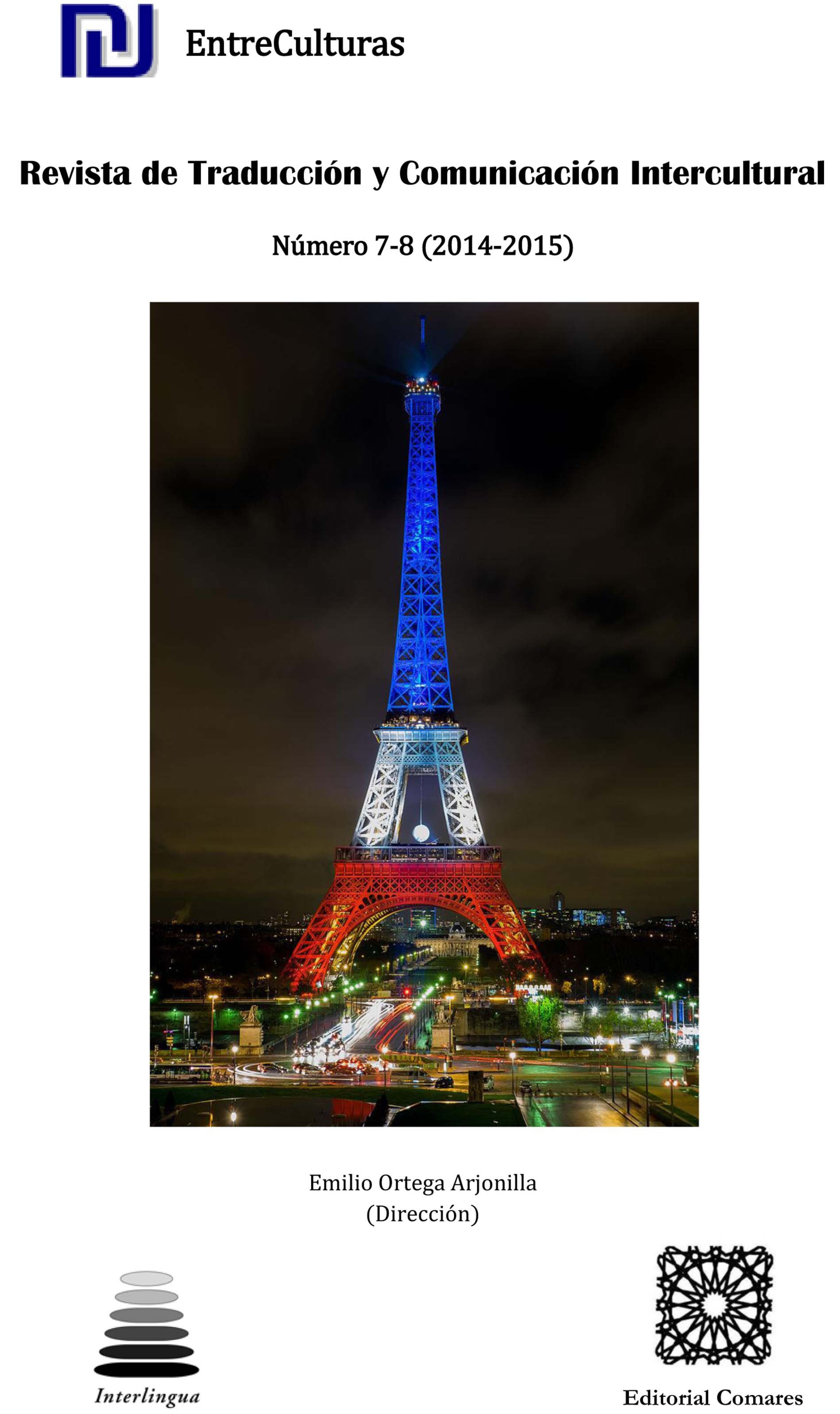LOCALIZACIÓN Y CULTURA: COMPRENDER LOS VIDEOJUEGOS COMO REFERENTES CULTURALES
DOI:
https://doi.org/10.24310/Entreculturasertci.vi7-8.11365Keywords:
video games, cultural references, localization, cultural adaptationAbstract
Academics and professionals are giving much importance to cultural references. They are very usual in almost every possible kind of text and they are something that translators must take into account if they want consumers to fully understand every possible aspect of the original text. There are several strategies in order to solve these cross-cultural differences, all of them adapted to the singularities of every kind of text. But, despite the importance of working appropriately with these texts, videogames are not being given the same treatment as cinema or novels. It’s not just that videogames can have cultural references, but also that they can be a cultural reference in other media. In this paper, we study several real examples and the need to be aware of the importance of both video games and cultural references.
Downloads
Metrics
References
Baker, C. (1997). «Transcription and representation in literacy research» en: Flood, J., Heatch, S.B. y Lapp, D. (ed.): Handbook of research on teaching through the communicative and visual arts. Londres, Prentice Hall International.
Chibbett, D. (1977). History of Japanese Printing and Book Illustration. Tokio/Nueva York/San Francisco: Kodansha Int.
Congost Maestre, N. (1994). Problemas de la traducción técnica: los textos médicos en inglés. Alicante, Universidad de Alicante.
Crystal, D. (1987). «Translating and Interpreting» en: The Cambridge Encyclopaedia of Language. Cambridge, Cambridge University Press.
Esselink, B. (1998). A Practical Guide to Software Localization. Ámsterdam, John Benjamins.
Esselink, B. (2000). A Practical Guide to Localization. Ámsterdam, John Benjamins.
Genette, G. (1987). Seuils. París, Seuil.
Ivir, V. (1981). «Formal correspondence vs. Translation equivalence revisited», Poetics Today, 2.4, 51-59.
Marcelo Wirnitzer, G. (2007). Traducción de las referencias culturales en la literatura infantil y juvenil. Frankfurt, Peter Lang.
Martín Fernández, C. (2009). «Traducción de los referentes culturales en el doblaje de la serie “Érase una vez… El hombre” al español», Entreculturas, 1, 261-273.
Méndez González, R. (2012). Traducción & Paratraducción de videojuegos: textualidad y paratextualidad en la traducción audiovisual y multimedia. Universidad de Vigo.
Méndez González, R. (2012b). «Traducir videoxogos dende a paratradución», Viceversa, 17-18, 141-158.
Méndez González, R. (2013). «Localización de videojuegos: necesidades y posibilidades de la traducción del siglo XXI» en: Montero, X. (ed.): Traducción para la comunicación internacional. Granada, Editorial Comares.
Méndez González, R. (2014). «Traducir para un nuevo entorno cultural: el sector de los videojuegos» en: Montero, X. (ed.): Traducción e industrias culturales. Frankfurt am Main, Peter Lang.
Nida, E. (1947). Linguistic Interludes. Glendale, Summer Institute of Linguistics.
Nord, C. (1997). Translating as a Purposeful Activity. Manhester: St. Jerome.
Papargyriou, E. (2004). «Translating Intertextuality as Cultural Reference: Yoryis Yatromanolakis’ Greek Novel Eroticon», Entertext 4.3, 90-102.
Shau, A. [en línea] (2009). http://www.gamespot.com/reviews/lux-painreview/ 1900-6207950. [consulta: 29 de marzo de 2014].
Steiner, G. (1992). After Babel: Aspects of Language and Translation. Oxford, Oxford University Press.
Tylor, E.B. (1974). Primitive Culture: Researches into the Development of Mythology, Philosophy, Religion, Art and Custom. Londres, Gordon Press.
Venuti, L. (1995). The Scandals of Translation: towards an ethics of difference. Nueva York, Routledge.
Vinay, J. P. y Darbelnet, J. (1958). Stylistique Comparée du Français et de l’Anglais. París, Didier.
Winthrop, R. H. (1991). Dictionary of Concepts in Cultural Anthropology. Westport, Greenwood Press.
Yuste Frías, J. (2006). «Traducción y paratraducción de la literatura infantil y juvenil» en: Luna Alonso, A. y Montero Ku?pper, S. (ed.): Tradución e Política editorial de Literatura infantil e xuvenil. Vigo: Servizo de Publicacións da Universidade de Vigo.
Downloads
Published
How to Cite
Issue
Section
License
All contents published in Entre culturas. Revista de traducción y comunicación intercultural are protected under the Creative Commons Attribution-NonCommercial-ShareAlike 4.0 International (CC BY-NC-SA 4.0) license. All about this license is available in the following link: <http://creativecommons.org/licenses/by-nc-sa/4.0>
Users can copy, use, redistribute, share and exhibit publicly as long as:
- The original source and authorship of the material are cited (Journal, Publisher and URL of the work).
- It is not used for comercial purposes.
- The existence of the license and its especifications are mentioned.
There are two sets of authors’ rights: moral and property rights. Moral rights are perpetual prerogatives, unrenounceable, not-transferable, unalienable, imprescriptible and inembargable. According to authors’ rights legislation, Entreculturas. Revista de traducción y comunicación intercultural recognizes and respects authors moral rights, as well as the ownership of property rights, which will be transferred to University of Malaga in open access. The property rights are referred to the benefits that are gained by the use or the dissemination of works. Entreculturas. Revista de traducción y comunicación intercultural is published in an open access form and it is exclusively licenced by any means for doing or authorising distribution, dissemination, reproduction, , adaptation, translation or arrangement of works.
Authors are responsable for obtaining the necessary permission to use copyrighted images.





7.png)
